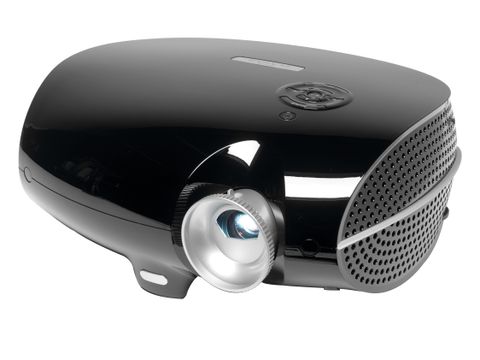TechRadar Verdict
As compelling a high-def projector as you'll find for the money
Pros
- +
Versatile connections
Impressive picture performance
Few of DLP's traditional flaws
Cons
- -
Limited zoom
Occasional issues with dark images and blacks
Why you can trust TechRadar
Joining Planar's debut PD7060 is this £600-cheaper model. The only difference is the PD7060 has a contrast ratio of 3500:1 compared with 2500:1 here.
Planar hails from the US, but there's a distinctly European feel to the PD7010's curvy, black and silver design.
It also goes out of its way to integrate with any wider AV system you may have, thanks to USB, 12V trigger, RS232 and IR jacks. Planar is consciously targeting the custom install market with these connections.
Ordinary world
But that's not to say ordinary folk can't use a PD7010 too. Most buyers will simply take advantage of its two digital video inputs (one HDMI and one DVI), component video inputs, PC input, and S-video jack, together with well-organised setup menus, a simple lens zoom/focus arrangement, and horizontal and vertical keystone adjustments.
The only niggles during setup are that the remote's a bit small, and the amount of optical zoom available is rather limited, so check out its throw distance options to be sure they suit your room.
Other key features are its compatibility with 1080p signals, its use of Texas Instruments' DarkChip 2 chipset delivering a 1280 x 720 native resolution and contrast ratio of 2500:1, a six-segment, four-speed colour wheel, a 'no over-scan' option for pixel-by-pixel playback of 720-line sources, and three picture setting memory slots.
Let loose on a Blu-ray disc of Casino Royale, the PD7010 puts in a seriously good performance.
The first thing to strike us are black levels. The night skies during the Bond flick's black and white opening sequence look rich, deep and convincing in a way few DLP projectors and no LCD models at this price level can match.
The picture also scores for its sharpness, rendering the immense amounts of detail in the shots around Bond's Alpine recuperation home with more accuracy and authority than any other sub-£1,500 DLP projector - bar, possibly, the InFocus IN76 (£1,400).
The scene where Bond talks with M on the phone from a boat in Venice, meanwhile, exhibits some outstanding colour resolution. The river and buildings look rich and vivid, while Bond's skin tones remain entirely authentic.
Positive energy
With precious little interference from those common DLP issues of the rainbow effect and fizzing noise over motion, our concluding feelings about the PD7010's pictures are overwhelmingly positive.
Naturally the price entails swallowing a couple of shortcomings in the form of a slight emptiness to the image's very darkest sections, and rare colour tone glitches with skin tones during dark scenes. But neither of these issues can stop us proclaiming the PD7010 as fine an affordable DLP debut product as we've ever seen.
Tech.co.uk was the former name of TechRadar.com. Its staff were at the forefront of the digital publishing revolution, and spearheaded the move to bring consumer technology journalism to its natural home – online. Many of the current TechRadar staff started life a Tech.co.uk staff writer, covering everything from the emerging smartphone market to the evolving market of personal computers. Think of it as the building blocks of the TechRadar you love today.

